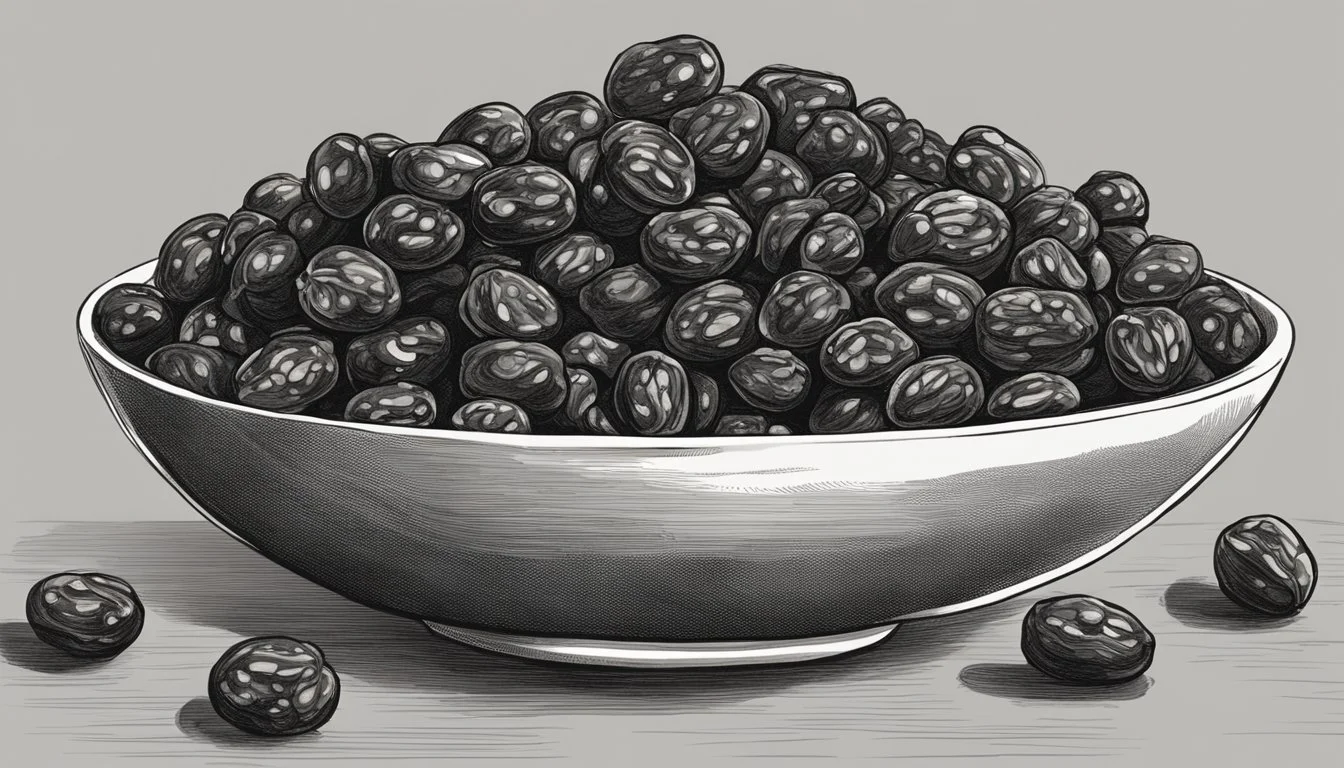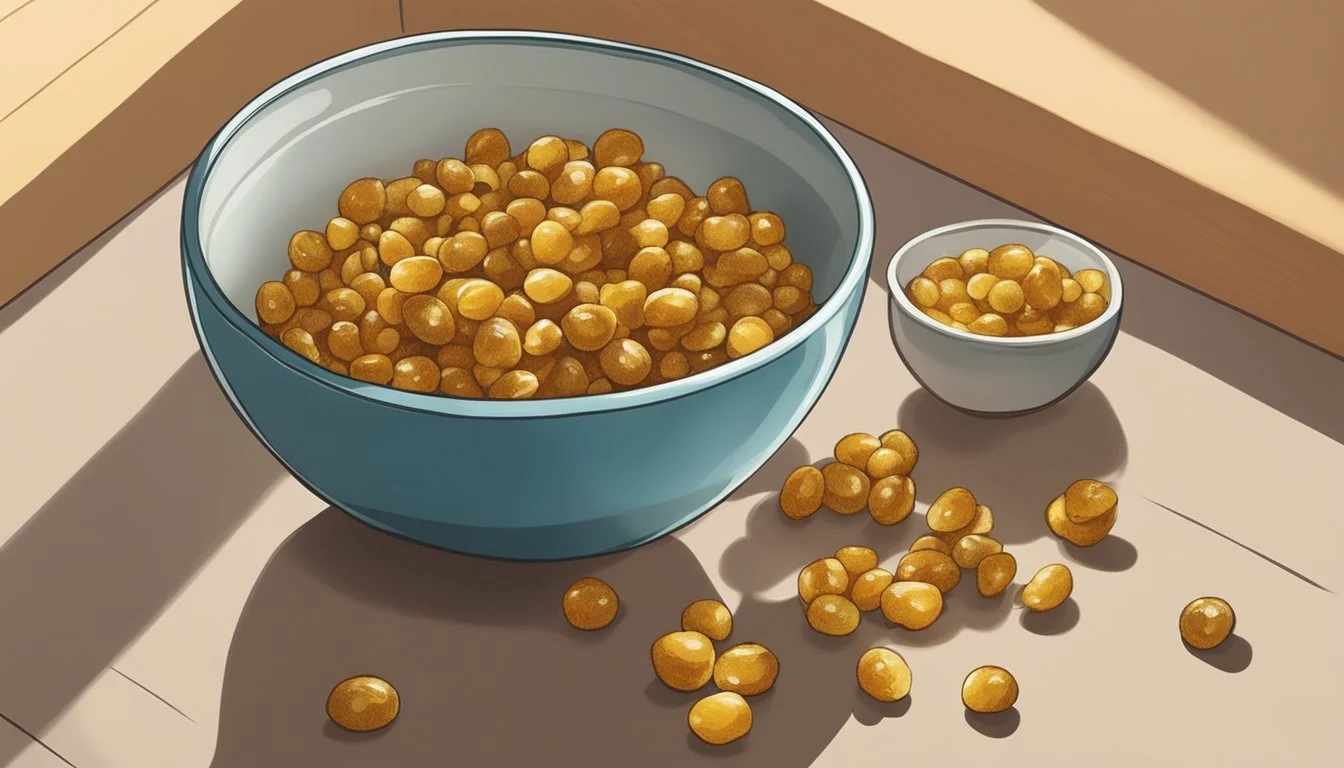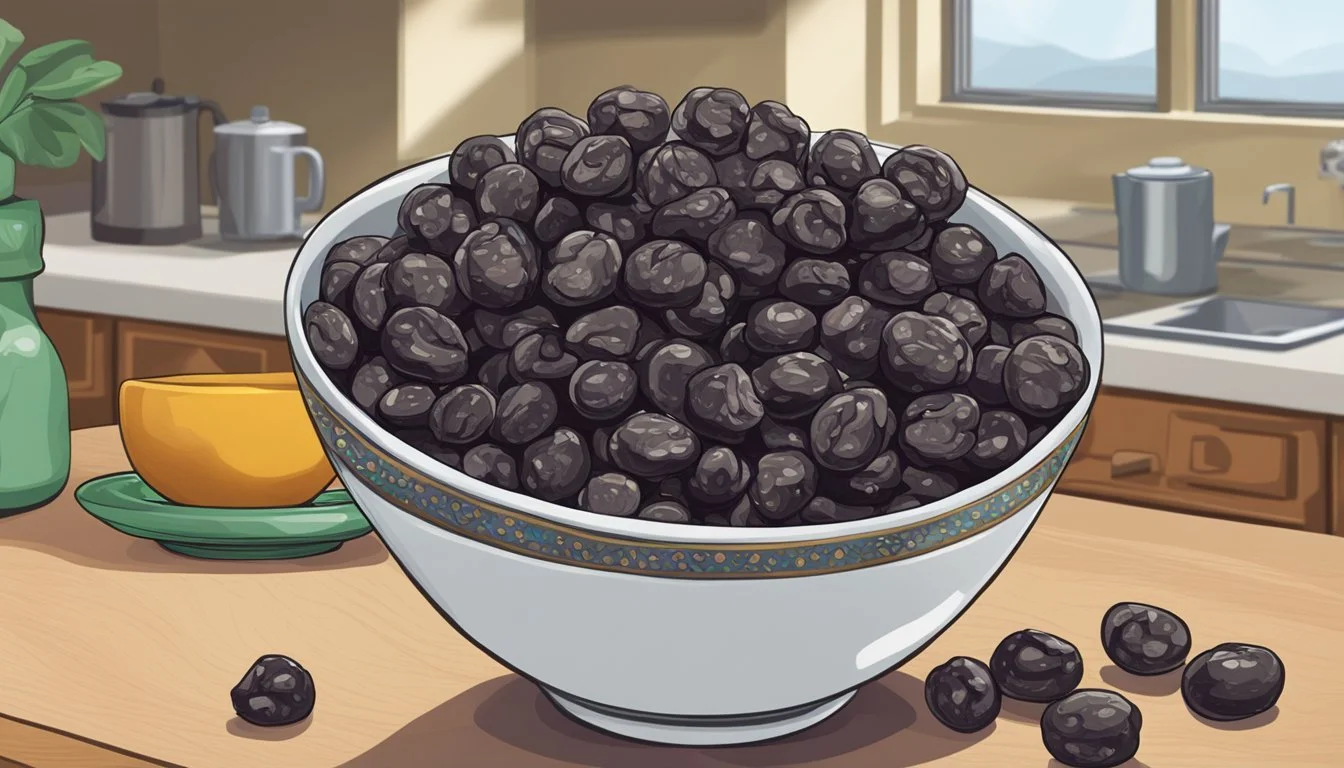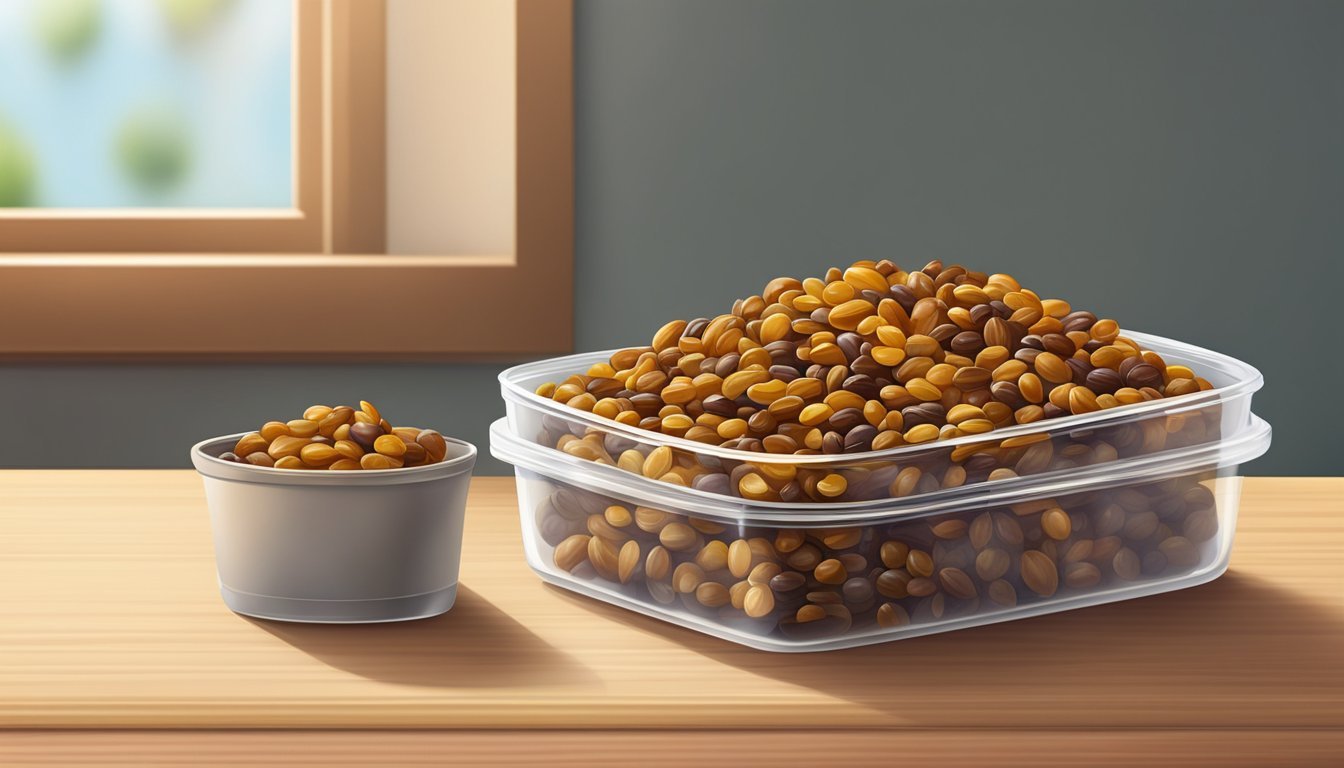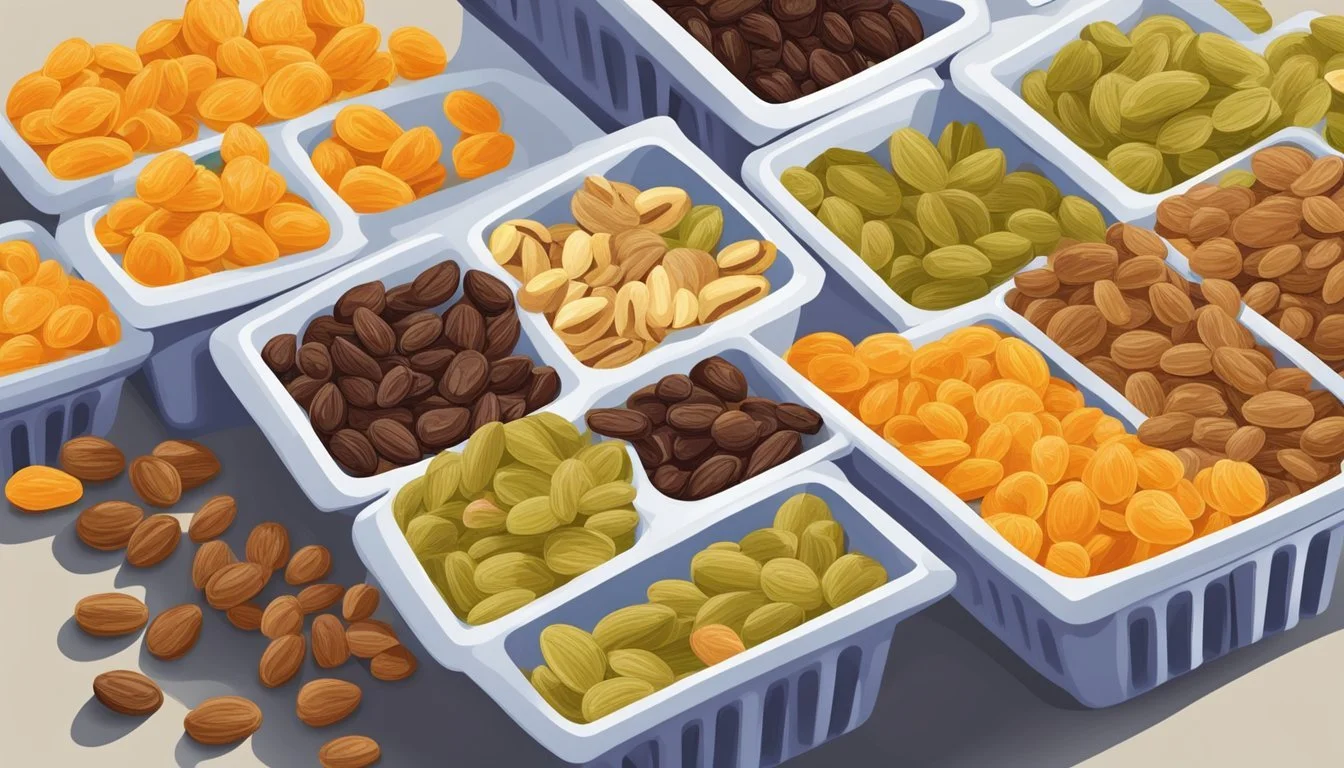How Long Do Sultanas Last?
Shelf Life and Storage Tips
Sultanas, also known as golden raisins (how long do raisins last?), are dried white grapes that have become a staple in pantries around the world. They are prized for their sweet flavor and versatility, commonly used in baking, cooking, and as snacks. The preservation process that turns grapes into sultanas naturally extends their shelf life by removing most of the water content, which inhibits the growth of microorganisms. As a result, sultanas have a significantly longer shelf life than fresh fruit.
The longevity of sultanas depends on proper storage conditions. When kept in a cool, dry place, sealed and protected from moisture and pests, unopened sultanas can be expected to maintain their quality for up to six months. Opened sultanas stored in the pantry can generally last for approximately three to five months. To further extend their lifespan, sultanas can be refrigerated, where they can maintain quality for nine to twelve months.
For long-term storage, sultanas may be frozen, which can extend their usability for over a year. It is essential to store them in an airtight container or freezer bag to prevent freezer burn and oxidation. While frozen sultanas can remain safe to consume for an extended period, slight changes in texture may occur once thawed. Despite these robust storage options, consumers should always check for signs of spoilage, such as mold or off odors, before using sultanas in their recipes.
What are Sultanas?
Sultanas are widely enjoyed for their sweet taste and versatility in culinary uses. Originating from certain varieties of seedless grapes, these dried fruits hold an important place in cuisines around the world.
Definition and Origin
Sultanas are a type of dried grape, traditionally made from seedless white grapes, specifically the Thompson Seedless grape variety. Originating from the Ottoman Empire, modern-day Turkey, they have become popular worldwide and are also extensively produced in Australia. Sultanas are known for their golden color and tend to be sweeter, softer, and juicier than their close relatives, raisins.
Types and Varieties
While sultanas are primarily derived from the Thompson Seedless grapes, variations exist due to different grape varieties and processing methods:
Golden Raisins: Often confused with sultanas, golden raisins are also made from seedless grapes but differ in color and processing. They are usually treated with sulfur dioxide to preserve their light color.
Regional Varieties: Different countries have their own preferred varieties of seedless grapes used to produce sultanas. From the traditional Turkish to the Australian sultanas, the climate and soil conditions impact the fruit's flavor and texture.
Nutritional Profile
In assessing the nutritional value of sultanas, they are predominantly known for their content of natural sugars, dietary fiber, and certain essential vitamins and minerals.
Macronutrients
Carbohydrates: Sultanas primarily consist of carbohydrates, with natural sugars making up a significant portion. For every 100 grams, there are approximately 75 grams of carbohydrates, primarily coming from sugars.
Protein: Low in protein, sultanas offer about 0.7 grams per 100 grams.
Fat: They contain a minimal amount of fat, roughly 0.1 grams per 100 grams.
Dietary Fiber: Sultanas are a source of dietary fiber, providing around 2 grams per 100 grams.
Vitamins and Minerals
Iron: Essential for blood production, sultanas contribute to the daily iron intake with approximately 1.88 mg per 100 grams.
Potassium: With about 746 mg per 100 grams, they are a good source of potassium, which is vital for heart health and muscle function.
Vitamin C: They contain a small amount of vitamin C, an important antioxidant.
Magnesium: Sultanas provide magnesium, a mineral involved in numerous biochemical reactions in the body.
Antioxidants: Aside from vitamins and minerals, sultanas are noted for containing antioxidants, although specific antioxidant levels vary.
Health Benefits
Sultanas offer a variety of health benefits, particularly related to digestive health and blood sugar management. They are a healthy snack option that can contribute to weight management and can be beneficial for those with diabetes, when consumed in moderation.
Digestive Health
Sultanas are a good source of dietary fiber, which is essential for maintaining a healthy digestive system. Fiber helps to increase the bulk of stools and facilitates regular bowel movements, reducing the risk of constipation. Incorporating sultanas into one’s diet can thus contribute to digestive well-being.
Fiber Content: Aids in preventing constipation through regular bowel movements
Healthy Snack: Can promote satiety and discourage overeating, supporting digestive health
Blood Sugar Management
Despite their natural sugar content, sultanas have a relatively low to medium glycemic index (GI), which means they cause a more gradual increase in blood sugar levels. This can be particularly beneficial for individuals managing diabetes. However, portion control is important as consuming large amounts of sultanas or any dried fruit can lead to a higher caloric intake and a potential spike in blood sugar levels.
Glycemic Index: Low to medium, leading to more controlled blood sugar spikes
Weight Management: Can play a role in a balanced diet, assisting with weight control which is beneficial in managing diabetes
Storage and Preservation
To maintain the quality and extend the shelf life of sultanas, proper storage methods are indispensable. Packaging and temperature control are critical factors to consider.
Packaging and Airtight Containers
Securing sultanas in airtight containers is essential to preserving their freshness. The lack of air circulation helps to prevent moisture and other contaminants from spoiling the sultanas. For optimal storage, one should transfer sultanas to an airtight container or heavy-duty freezer bag after opening. This not only maintains quality but also extends shelf life significantly.
Before sealing: Ensure sultanas are dry and free from moisture.
Remove excess air: Before sealing the container or bag, pressing out as much air as possible reduces oxidation.
Refrigeration and Freezing
Storing sultanas in the refrigerator can prolong their freshness beyond the best before date due to the cooler temperatures slowing down deterioration.
Refrigerator shelf life: 6 to 12 months, potentially maintaining a better texture than room temperature storage.
Freezing sultanas is suitable for long-term preservation. When one plans to freeze the sultanas, following the steps below ensures they last and keeps their quality intact.
Packaging: Place in an airtight container or heavy-duty freezer bag.
Excess air removal: Eliminate as much air as possible before sealing to minimize freezer burn.
Freezer shelf life: Can extend well over a year, although one may notice a slight firmness in texture once thawed.
Culinary Uses
Sultanas provide a natural sweetness and appealing golden color to various dishes, enhancing both flavor and texture. They can be used diversely in cooking, from baking to snack mixes, offering a nutritious boost to many recipes.
Baking with Sultanas
In baking, sultanas are a staple ingredient. They are commonly incorporated into cakes, such as fruitcake and carrot cake, providing bursts of sweetness. When baked, sultanas contribute to the moistness of the goods, ensuring a tender texture. Bakers often soak sultanas in juice or alcohol to plump them up before adding to baked goods, which also infuses additional flavor. Here's a short list of popular baking recipes that feature sultanas:
Fruitcake
Carrot cake
Teacakes
Hot cross buns
Sultanas as a Snack
Sultanas serve as a convenient and sweet snack on their own. They are also a perfect addition to trail mixes or can be sprinkled over cereals and oatmeal for a sweet, chewy texture. Their compact size and chewiness make sultanas a favorite for on-the-go energy boosts. They can also be mixed with nuts and seeds in a trail mix for additional nutrients and flavors.
Cooking and Chutneys
Beyond sweet dishes, sultanas can add a subtle sweetness to savory recipes. They blend exceptionally well in Middle Eastern and North African cuisines, adding to the complexity of flavors in dishes such as tagines or pilafs. Sultanas can also be used in chutneys, complementing the tartness with their innate sweetness and contributing a softer texture. They are versatile in salads, providing a pop of color and taste that pairs well with the ingredients.
Selecting and Buying Tips
When it comes to purchasing sultanas, one should focus on understanding product labels and assessing the quality of the fruit to ensure they’re getting the best product available.
Understanding Labels
Size and Pack Information: A label provides crucial details about the size of the pack and whether the sultanas are sold in bulk or smaller packages. Buyers should note that larger packs may offer better value but could affect longevity if not used in a timely manner.
Label Clarity: Clear labeling on sultanas includes their origin, any added ingredients such as preservatives, and best before dates. High-quality sultanas often boast their natural drying process and lack of added sugars or preservatives. Buyers should look for labels that specify 'naturally dried' and 'preservative-free' to ensure a pure product.
Assessing Quality
Color and Texture: High-quality sultanas should have a uniform golden color, indicating proper drying and preservation. One should check for vibrant, plump fruits, which are often a sign of freshness. Discoloration or shriveled texture can indicate age or poor storage conditions.
Sweetness and Flavor: Sultanas are known for their natural sweet flavor. Buyers should opt for packages that allow a scent check or provide a taste test to ensure the sultanas have not lost their characteristic flavor.
Overall Quality: When selecting sultanas, one must weigh attributes such as size, color, and plumpness, as these often correlate with quality. Sultanas that look plump and uniform in size with a vibrant golden color are typically fresh and promise a rich, sweet flavor.
Common Substitutes
When sultanas are unavailable or unsuitable, one can opt for a range of other dried fruits that provide similar texture and sweetness. Substitutions can vary based on the intended use, whether it's for snacking or inclusion in baked recipes.
Using Other Dried Fruits
Raisins: They are the closest alternative to sultanas, typically interchangeable on a one-to-one ratio. Raisins bring a similar sweetness and chewiness to dishes.
Currants: Smaller than sultanas, currants offer a more intense burst of flavor. Their tangy taste complements sweet and savory recipes alike.
Prunes: A suitable substitute known for their rich flavor and soft texture. Prunes work well in cooked recipes.
Black Currants: Offering a unique, tart flavor, dried black currants can replace sultanas, especially in savory dishes or when a distinctive taste is desired.
Alternatives in Baking
In baking, substitutes not only need to harmonize with the flavor profile of the recipe but also behave similarly during the cooking process.
Raisins: They withstand high temperatures well, making them a reliable substitute for sultanas in baked goods.
Currants: Due to their size, they are best used in recipes that call for a fine distribution of fruit, such as in scones or cookies.
It's important to select a substitute that complements the other ingredients in the recipe and aligns with the desired texture and moisture content of the final product.
FAQs in Sultana Usage
When using sultanas, consumers often have questions related to health implications and culinary applications. This section provides insights into both aspects to ensure safe and versatile use.
Health Considerations
Q: Are there health risks associated with consuming sultanas?
A: Sultanas are generally safe to eat for most people. However, they do contain natural sugars, so moderation is key. Those with a sensitivity to sulfites should look for preservative-free options, as sulfites can sometimes cause allergic reactions.
Q: Can sultanas be soaked before consumption for health benefits?
A: Soaking sultanas can make them easier to digest and also reduce their sweetness if desired. Some methods suggest soaking in water, while others recommend using alcohol for flavor infusions.
Culinary Queries
Q: How can one maintain the moisture of sultanas in culinary applications?
A: To preserve moisture, it's essential to store sultanas in airtight containers to prevent them from drying out. If they do lose moisture, soaking them in water can rehydrate them before use in recipes.
Q: Is it possible to sweeten sultanas further for use in desserts?
A: Sultanas are naturally sweet, but if a recipe requires them to be sweeter, they can be soaked in a solution of sugar and water, or even juices for added flavor.
Comparison to Other Dried Fruits
When discussing shelf life, it is essential to understand how sultanas compare to other dried fruits like raisins and currants, as each has unique characteristics that can affect longevity.
Sultanas vs. Raisins
Sultanas are a type of dried fruit made from seedless white grapes, usually of the Thompson Seedless variety. They are often lighter in color compared to raisins, which are also dried grapes but typically from darker grape varieties. When stored properly in a cool, dry place, sultanas can last just as long as raisins, which is approximately 6 months to a year past their printed date when unopened. However, raisins may have a slightly longer shelf life due to their darker skin and less moisture content.
Color: Lighter (sultanas) vs Darker (raisins)
Grape Variety: White (sultanas) vs Mixed/Dark (raisins)
Shelf Life: Comparable, with raisins potentially lasting slightly longer
Sultanas vs. Currants
Currants, on the other hand, are a completely different fruit when referred to in the context of fresh produce, being small berries from the ribes family. However, when speaking of dried currants (often labeled as Zante currants in the United States), they're actually tiny, dried red grapes from a variety known as Black Corinth or Carina, originated from Greece. Currants tend to be smaller and less juicy than sultanas, with a stronger and tangier flavor. Their reduced size and lower moisture content may lend dried currants a marginally longer shelf life compared to sultanas, but they generally follow the same storage guidelines for optimal freshness.
Type: Dried berry/grape (currants) vs Dried grape (sultanas)
Taste: Tangier (currants) vs Sweeter Taste (sultanas)
Shelf Life: Similar, with currants potentially lasting slightly longer due to low moisture

